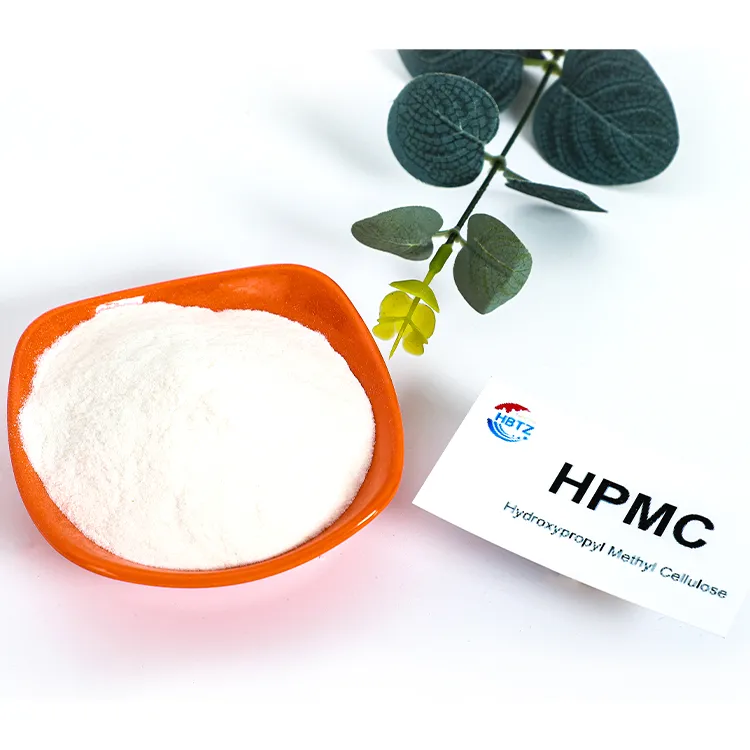
HPMC Thickener-Hebei Tangzhi|Water Retention,Bonding
Introduction to Hydroxypropyl Methyl Cellulose (HPMC)
Hydroxypropyl Methyl Cellulose (HPMC) is a high-performance multifunctional thickener and stabilizer widely used in construction, medicine, food, and daily chemicals. With its unique chemical structure, HPMC offers exceptional water retention, bonding properties, and thermal stability. CAS 9004-65-3 is the chemical identifier for this versatile compound, which is derived from natural cellulose through chemical modification.


Key Features of HPMC
- High Water Retention: HPMC prevents rapid drying of mortar and coatings, reducing cracking and improving workability.
- Excellent Bonding Properties: Enhances adhesion in construction materials and pharmaceutical formulations.
- Thermal Stability: Maintains performance under varying temperature conditions, ideal for industrial applications.
- Non-Toxic and Safe: Suitable for food, medical, and cosmetic applications due to its nontoxic nature.
Technical Specifications
| Parameter | Range |
|---|---|
| Hydroxypropyl Content | 7–12% |
| Methoxy Content | 22–28% |
| Ash | ≤5% |
| Viscosity | 20,000–200,000 mPa·s |
| pH | 5–8 |
| Moisture | 5±2% |
| Gel Temperature | 60–75℃ |
| Density | 350–450 g/cm³ |
Applications of HPMC
1. Construction Industry
HPMC is a critical component in mortar, plaster, and adhesives. It improves workability, water retention, and mechanical strength. For example, in cement mortar, HPMC ensures uniform consistency and reduces cracking.
2. Pharmaceutical Industry
HPMC is used as a binder and disintegrant in tablets and capsules. Its film-forming properties enhance drug stability and controlled release. The NIST has published guidelines on cellulose derivatives in pharmaceutical applications, emphasizing their safety and efficacy.
3. Food Industry
As a thickener and emulsifier, HPMC improves the texture of sauces, dressings, and dairy products. Its non-toxic nature makes it ideal for food additives.
4. Cosmetics
HPMC is used in skincare products for its moisturizing and film-forming properties. It creates a smooth, non-greasy texture while retaining moisture for dry or sensitive skin.
Production Process of HPMC
- Raw Material Preparation: Methyl cellulose, propylene oxide, and catalysts are selected to meet quality standards.
- Reaction Process: The mixture is reacted under controlled temperature and pressure to form hydroxypropyl methyl cellulose.
- Refining: Impurities are removed through centrifugation and washing, followed by drying to obtain the final product.
- Packaging: The refined HPMC is packed in 25kg multi-layer paper bags lined with polyethylene for safe storage.
About Hebei Tangzhi Technology Co., Ltd.
Hebei Tangzhi Technology Co., Ltd. is a leading HPMC supplier based in Jinzhou City, Hebei Province. With a 140,000 m² factory and 90,000 m² of production space, the company produces over 40,000 tons of HPMC annually. Their state-of-the-art facilities and commitment to quality make them a trusted partner for global clients.
For more information, visit their company page or contact them at admin@tangzhicellulose.com.
HPMC vs. HEC: Key Differences
While both HPMC and HEC are cellulose derivatives, HPMC offers superior water retention and thermal stability. HEC is preferred for clarity and film formation, whereas HPMC excels in moisture retention and workability.
FAQs About HPMC
What are the types of HPMC?
HPMC is categorized into hot-melt (for high-temperature applications) and instant-dissolving (for cold water applications).
What is the HPMC manufacturing process?
The process involves cellulose extraction, etherification, purification, and drying. For details, refer to the technical documentation.
How does HPMC benefit skincare?
HPMC provides a smooth, non-greasy layer on the skin, retains moisture, and enhances product texture. It is ideal for sensitive skin formulations.
References
NIST (National Institute of Standards and Technology) has published extensive research on cellulose derivatives and their applications. For authoritative guidelines on material standards, visit NIST's official website.
-
Reliable Powdered Cellulose Supplier: Quality, Sustainability & InnovationNewsNov.24,2025
-
Find Trusted Microfibrillated Cellulose Suppliers for Sustainable Industrial SolutionsNewsNov.24,2025
-
Leading Methocel Suppliers: Quality, Innovation & Sustainability in Methylcellulose SupplyNewsNov.23,2025
-
Reliable Hydroxyethylcellulose Suppliers for Industry & Sustainability | Tangzhi HPMCNewsNov.23,2025
-
Top Ethyl Cellulose Supplier – Quality, Sustainability, and Industrial SupportNewsNov.23,2025
-
Trusted CMC Powder Suppliers for Food, Pharma & Industrial Use | Tangzhi HPMCNewsNov.22,2025





















